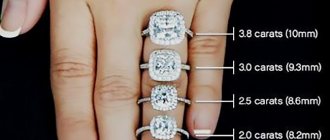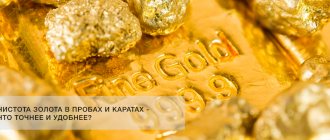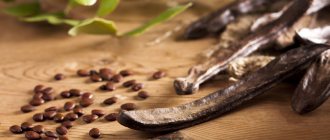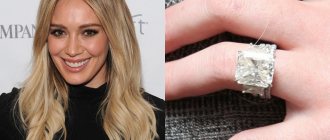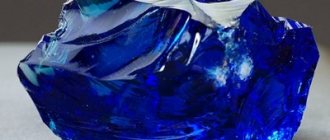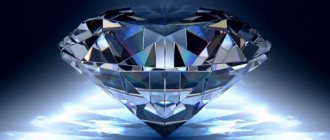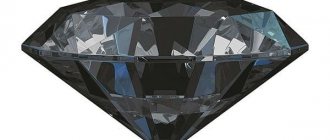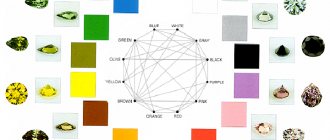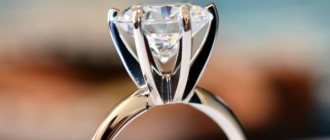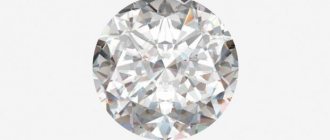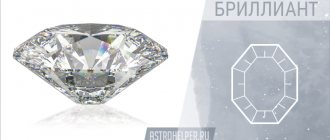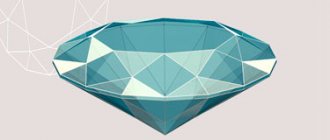Diamond clarity is one of the characteristics that everyone has heard about, but few can clearly define what it is. However, when buying jewelry as an investment or as a gift for a loved one, we want to be sure that it is of excellent quality. And then we begin to wonder what the characteristics of diamonds are, how to distinguish them from each other and how to choose a diamond so as not to make a mistake.
Where to buy
Diamonds are not a product that is purchased from time to time. For many, this is a single event in their lives. Therefore, you should not rush, go to the nearest store or hope to buy a pebble for the occasion.
There are three options:
- online store;
- jewelry salon;
- dealer office.
In each case, it is advisable to collect as much data as possible about the seller. Read reviews, especially negative or ambiguous ones. It’s better to choose not one option, but two or three.
A reputable office or salon always creates favorable conditions for the buyer:
- A place for visual inspection and analysis of the stone.
- Availability of special education for sales consultants.
- Instruments and tools for research - 10x magnifying glass, carat scales, electronic calipers for measuring stones in three dimensions.
If the buyer does not know how to use the devices, the seller is obliged to do so at his request.
Magic properties
The magical properties of the stone have been known since ancient times; its energy is so high that it can improve a person’s aura. However, only those gems that were received as a gift or inherited have such properties. If you purchase jewelry on your own, you should not count on such power.
Thanks to its magical properties, the diamond protects the owner from negative influences from others. In addition, such nuggets neutralize damage and all kinds of curses. A person who has such a stone gains self-confidence, becomes much more resilient, and does not experience a feeling of fear.
Advice! Diamond stones can only be worn by those people whose thoughts are pure, who are honest not only with themselves, but also with those around them. If there are evil intentions, the mineral will not only not help, but will also cause serious harm to the owner.
Diamond classification
At the everyday level, it is believed that the main advantage of a diamond is its weight. Professionals evaluate comprehensively, according to the international 4C system. Cut, clarity, weight, color are taken into account (from the English cut, clarity, carat, color).
Cut
It is the cut that turns a dull diamond into an expensive sparkling diamond. Its type is chosen based on the shape, size, and quality of the pebble. Good work neutralizes flaws, emphasizes advantages, and preserves the original weight of the stone as much as possible.
More often, the crystal is cut classically - round diamonds with 57 facets (KR57) are beautiful. This is how many facets there should be on a stone over 0.3 carats. Very large expensive specimens are cut with values of 74, 86, 102; for small ones, an option with 17 facets is acceptable.
Fancy shapes such as heart, pear and marquise are popular.
Purity
The degree of purity determines how the stone reflects sunlight. According to the GIA classification, there are 11 purity groups - from IF (without flaws) to I3 (imperfect).
The Russian scale is different. A 9-point scale determines the purity of stones up to 0.29 carats inclusive; a 12-point scale evaluates crystals heavier than 0.3 carats. At the same time, 1 is the highest purity, 12 is the lowest-grade stones with significant inclusions.
Pebbles up to the seventh level are considered a good choice, so if finances are limited, choose a specimen from the “golden” mean based on purity.
Color
Almost all crystals are transparent or yellowish. According to international gradation, they are assigned a sign - from D to Z, indicating the degree of transparency and yellowness.
D is for “pure water diamonds.” Starting from H, the stones have a yellowish tint, which is visually distinguishable. Popular colors among Europeans are 4 and 5 (J and H).
In Russia, color is classified into 9 groups, from 1st – absolutely colorless diamonds to 9th – specimens with a pronounced yellow or brown tint. The price difference between them is two to three times. The best-selling stones are level 3–5, but it is impossible to determine by eye whether it is level 3–4 or level 4–5. It’s worth thinking about whether it makes sense to overpay.
For “white” crystals, the degree of colorlessness is valued. People of color are classified according to their color groups and subgroups. The characteristic includes the term fancy (that is, fantasy), a description of color and its saturation. Colored stones are usually cheaper. But bright, fancy blues, yellows, and greens are rare. They are considered the best, valued many times over, and sometimes an order of magnitude higher than classic colorless diamonds.
Weight
The Russian system is similar to the world one. Diamonds are weighed in carats to the second decimal place - one carat is equal to 0.2 grams.
Crystals according to this parameter are divided into categories (in carats):
- up to 0.29 – small;
- up to 0.99 – average;
- from 1.00 – large.
The weight of a stone in jewelry is calculated using special formulas. Knowledgeable people advise taking 0.99-carat copies. Visually, they are indistinguishable from one-carat ones, but are significantly cheaper.
Popular jewelry diamonds range from 0.30 to 1.00 carats. One-carat stones are used for rings, and smaller ones are used to decorate earrings.
Fluorescence
A high fluorescence rate reduces the cost of the stone by a third. Such specimens are identified by their luminosity in ultraviolet light.
Purchase authentication technology
In pawnshops, precious stones are valued using the 4C system. Initially, the specialist weighs the gem and thus determines its size in carats. After this, using the correspondence table, the sample under study is correlated with the color scale.
Fancy and completely transparent crystals are considered the most expensive. Choosing a color category is far from an easy task. Initially, the appraiser examines the mineral visually and then subjects it to multiple magnifications.
To give a correct assessment, only tools that do not give glare into the depth of the product are used. Lighting fixtures should emit white, and instruments should only be gray or black.
At the next stage, the specialist determines the purity category. After this, he needs to assess the quality of the cut, how accurately and skillfully it was made. If a mineral is poorly processed, you can even notice it with the naked eye. All other flaws can only be seen with magnification. This also makes assessment much more difficult.
Who issues certificates
The first thing a diamond buyer does is look at the quality certificate that comes with the stone. Guaranteeing authenticity is especially important if the item is purchased as an investment.
An international certificate guaranteeing quality and accurate evaluation is issued by the Gemological Institute of America (GIA). The second organization is HRD, but its testimony is less popular. In Russia, this is the competence of the Moscow Gemological Center and other institutions.
The document states:
- stone quarrying site;
- place of processing;
- weight;
- color;
- purity;
- degree of fluorescence;
- presence and nature of defects.
Such a certificate is an authoritative proof of the declared characteristics of a diamond.
Medicinal properties
The healing properties of diamonds became known quite a long time ago; for a long time it was used to heal internal organs. The gem allows you to cure diseases associated with the kidneys, lungs, and bladder.
Today, nuggets are actively used in lithotherapy - a branch of medicine that uses exclusively stones in its work. It is generally accepted that jewelry has the following properties:
- lifts the mood;
- reduces pain;
- normalizes blood pressure;
- improves the condition of the skin, hair, nails;
- relieves insomnia.
The stone can reveal its features in full only if it is worn on the left hand or next to the heart.
Important! Doctors believe that it is beneficial to drink the water in which the diamond has been kept for some time.
How to decipher a tag
An expensive diamond comes with a tag with characteristics.
For example, we see on it a set of numbers and letters - 4 KR-57 0.6 3/3 B. This means:
- 4 – the number of stones in the decoration, that is, 4;
- KR - means round cut;
- 57 – number of faces;
- 0.6 – weight of the product; if there are several stones in the jewelry, then their total weight is indicated on the tag;
- 3/3 – the color and quality of the stone, that is, the 3rd position on a scale from 1 to 9 (9 are the dirtiest stones);
- B – cut level, there are four in total (A, B, C, D), A – the highest.
To read the tag in the cabin, use tables with decoding of symbols. The sales consultant has them.
What to prefer - color or clarity
Color and purity are two important criteria that indicate the quality of precious minerals. On the tag they are placed side by side in the form of regular numbers. The first point is given to color, and the second to purity, and it is problematic to understand exactly which of these indicators should be better.
When choosing, the following circumstances are taken into account:
- Priority is given to color if a specific setting is provided for the gemstone. If the frame is white, then visible shades are extremely undesirable. In this combination, the yellowishness will be pronounced.
- Clarity is important if the stone is to be set in yellow gold. This metal will absorb the yellowness. The mineral will visually appear white. True, if its quality is low, the dirt on it will become pronounced. The gem should look absolutely clean.
Things to remember when buying a diamond
When going for a precious stone, it is advisable to take a knowledgeable person with you. It will help you choose the right diamond. And in order not to lose your head in front of a sparkling display case, consider the following.
- Determine the amount intended for the purchase.
- Select several products that are similar in price and appearance. Compare by main characteristics.
- Choose the option that suits the price/quality ratio.
- Check the certificate for it. The document must be issued by the manufacturer or a reputable organization, but not by the store.
- Avoid specimens of levels 8 – 12 in terms of purity. They have many defects that can cause the stone to crack.
- When buying diamond jewelry, you shouldn’t splurge on super expensive colorless stones. The frame will change shade.
- Even stones from 0.3 carats are equipped with a GIA certificate
A 1 carat diamond ring is significantly more expensive than one with many crystals of the same total weight. Placer dust particles no larger than 0.09 carats fetch $210–305 per carat. And to the inexperienced buyer they are presented as expensive diamonds.
Cut
Let's talk more about cutting. The choice of shape is very subjective. Thus, people of the older generation more often choose the round cut, while young people choose the “princess” cut.
And the point is not at all about conservatism, but about the peculiarities of vision of different age groups. Diamonds that are not very large in size (0.5 carats) with a round cut give more noticeable flashes of fire. Although their quantity is less than that of a princess cut diamond. Young people are better at distinguishing small flashes and choosing a stone with more frequent flashes as the best in brightness.
Experienced gemologists advise focusing on the following characteristics of a diamond as an ideal investment. Weight 0.5 carats or more, color in the DF range. Cleanliness within IF-VS2 (cleanliness classes 1-5 on the Russian scale). The abbreviations GIA stand for:
- Internally flawless (IF), or pure. This is complete flawlessness, that is, the absence of any external or internal defects when viewed through a magnifying glass (x10). It is this kind of diamond that is called “a stone of pure water”;
- Very, very small inclusions (VVS1), there are tiny inclusions. There may be a light spot in the central zone of the stone when viewed from the pavilion. The middle zone and periphery - no more than two light dots or one thin strip; VVS2 (grade 3 on the Russian scale) This is where the category of diamonds most in demand for investment begins: in the central zone of the stone there can be up to three light dots, in the middle zone and periphery - no more than two dark dots or two small stripes;
- Very small inclusions (VS1 - VS2) – there are minor inclusions. These are stones of medium purity (class 5 in Russia).
The preferred cut type is Round. It is better to choose “Excellent” and “Very Good” cut quality. In this case, the play of light will be richer. Fluorescence is not acceptable.
How to recognize a diamond
The gemstone market does not disdain artificial analogues or outright fakes; a high price does not guarantee authenticity. There are simple ways to evaluate the origin of a diamond.
- Under a magnifying glass. The 10x magnification model reveals inclusions. They are present in natural crystal, but are absent in artificial crystal.
- Glycerol. In a water-glycerin solution, the natural stone is noticeable, while the artificial one “disappears.”
- Acid. The sample is immersed in hydrochloric acid. The natural one will not change, the artificial one will become cloudy or stained.
- Cut. A real stone is trusted only by specialists, so the processing ensures the quality of the diamond, such as focusing. That is, when you turn a pebble, light gathers inside it at one point. If there is no effect, it is a fake.
However, it is difficult to determine the characteristics of this kind of stone. Amateur work with super-expensive stones is permissible if you have knowledge and experience. It is better to obtain the results of a gemological examination. We wrote about how you can determine authenticity at home here.
When you decide to buy a diamond, you need to prepare, arm yourself with knowledge, and choose the appropriate option. And remember that the exorbitant price is not always justified and not all sellers are honest with the “uneducated” buyer. Therefore, it is worth inviting a knowledgeable assistant, and when choosing, prefer a reasonable price/quality ratio. Then there will be no doubt about the authenticity of “best friends” and the wisdom of the purchase.
Physical properties
Diamonds, like rough diamonds, are made up of carbon atoms. The chemical formula of this nugget is C. The atoms are in a certain order, resulting in the formation of cubes. The density of the gem per cubic centimeter varies from 3.47 to 4.55 grams.
According to the Mohs scale, a diamond is considered the hardest substance, as its hardness reaches 10 units. Despite its high hardness, the material is quite brittle and will not be difficult to break. The melting process begins at a temperature of +4000 degrees. If you place a stone in a vacuum, it will burn completely when the temperature reaches +800 degrees.
Compatibility with other stones
Diamonds are Fire stones, so their compatibility can only be with the same representatives of the fire or earth element:
- ruby;
- sapphire;
- crocodile;
- jasper;
- morion.
These stones are successfully combined with diamonds and charge a person with energy, increase his vitality and give an impetus to move forward. In addition, by balancing emotions, they give people confidence and consistency.
When choosing a new piece of jewelry for yourself, remember that minerals of the air and water elements do not combine well with diamonds. Among them are carnelian, amethyst, chrysoprase, selenite, aquamarine, alexandrite, and opal.
The magic of mineral
Diamond is a stone of leaders and confident individuals. This is a powerful amulet and a strong protector. The diamond will give the owner determination, fortitude, protect him from bad influences, reveal strengths and increase self-esteem. A diamond will give a person optimism and attract good luck.
Important! An evil stone will turn evil even against its owner. The diamond must be given as a gift, otherwise a person will feel its properties only 7 years after purchase or not at all. A woman should be given a diamond by a man. For married women, a diamond is the guardian of the hearth, and for single women, it is a shield that will not allow them to enter into marriage.
Fantasy stones are also endowed with special powers. Blue, for example, improves the functioning of the body, and on a magical level acts as a symbol of devotion. Yellow stone is a companion of believers. Red serves as a spiritual “cleanser”, and pink embodies tenderness and femininity.
You can read about the magic of Diamond-Diamond here.
Who is it suitable for?
If we turn to astrology, it becomes clear that diamond is correlated with the sun. Thus, a diamond is suitable for all people, but it is important to take into account a number of nuances.
For clarity, you can see which zodiac sign a diamond is most suitable for:
- Aries, Sagittarius, Leo - the gem is best suited for them, since they perceive the outgoing energy, using it for personal purposes.
- Libra, Aquarius - a diamond helps these zodiac signs gain confidence in their own abilities.
- Capricorns – it is recommended to use white or blue diamonds.
- Cancers, Pisces - allows you to organize your thoughts.
- Taurus – preference should be given to black diamonds, which will give confidence.
- Gemini - green stones will improve your health and help improve your financial condition.
- Virgo, Scorpio - any stone will do, except black.
Diamond brings success to people with names like Margarita, Alexander, Victor, Maria.
Note
The luxury and brilliance of a diamond attracts aristocrats, young girls and mature ladies. The best friend of the diva Marilyn Monroe won the hearts of the entire female half of the globe. Solid but fragile. Strong but graceful. Talisman of good luck and determination. Eternal, indestructible, great.
Photo gallery of stone
Earrings with Amethyst and Diamond
5 / 5 ( 3 votes)
History and origin
The story of a diamond is similar to the story of the birth of a moth. Like a beautiful butterfly, which was previously an inconspicuous caterpillar, a diamond was born after the competent transformation of the hardest mineral in the earth's interior - Diamond.
About six thousand years ago, on the Indian peninsula, people discovered an unusually hard mineral. For a long time, diamond was not considered a precious stone, and was not even one of the expensive minerals. They found him, but they didn’t know what to do with him. The strength of the nugget did not allow the stone to be processed using the technologies of the past.
It was only in the 15th century that the first diamond was produced in Belgium. The Flanders were able to develop diamond cutting technology, which turned the mineral into a world-favorite attribute of wealth, a symbol of the elite. Thanks to Louis de Bernel, the inconspicuous pebble began to shine with all the colors of the rainbow. To this day, diamond cutting technology is used to process other precious and semi-precious gems.
Do you know that one of the largest diamonds is on the crown of the Queen of England.
The first cut diamond went to the Grand Duke of Burgundy. Karl the Bold, together with his favorite Agnes Sorel, started the fashion for diamonds in high society. Since then, no ruler could resist the charm of the diamond, including the Russian Empress Catherine, as well as the Emperor of France, Napoleon Bonaparte.
There is much controversy about the origin of diamonds. The most famous version speaks of the formation of a mineral in the depths of the earth's mantle under diabolical pressure. Volcanic underground explosions bring the gem to the surface through kimberlite pipes. Diamonds are not rare stones. However, in order to obtain 1 carat of diamond, it is necessary to process 500 tons of ore . Such efforts, multiplied by the work of the craftsmen and all the rare qualities of the stone, determine the fabulous price of the gem.
Artificial diamond
Diamond has properties valuable to science and industry. The world demand, primarily for technical specimens, amounts to millions of carats .
At the end of the 30s of the 20th century, Soviet physicist Ovsey Leypunsky calculated the equilibrium curve between diamond and graphite, that is, he determined the conditions for diamond crystallization. It was published in 1939 But O.I. Leypunsky's discovery was registered only in 1971 .
And before that, in the 1950s–1960s , Swedish, American and Soviet scientists independently obtained diamond crystals using different synthesis conditions.
In the 1960s, the technology of diamond synthesis for industrial needs was created and introduced into mass production in the USSR.
Artificially grown stones are similar to natural ones in composition and structure. They do not consist of synthetic materials, so the term “synthetic” in relation to them is not entirely correct.
Use of stones
The importance of this stone in a person’s life cannot be overestimated. The hardest of all minerals, diamond, has found its use in industries such as:
- medicine;
- construction;
- astronomy;
- telecommunications;
- electronics;
- heavy engineering;
- instrument making;
- scientific research in the field of physics and chemistry.
A gem processed in accordance with all the rules of cutting fulfills an equally important purpose - it gives people joy by decorating jewelry. In addition, rough and polished diamonds are a reliable investment that ensures the safety of capital.
Place of Birth
Previously, diamonds were found in placers of other rocks, often in river sediments. Therefore, it was believed that the formation of nuggets depended on river flow. But in the mid-19th century, geologists found kimberlite pipes.
These are peculiar “abscesses” on the body of the Earth. They consist of igneous rocks, including 10% of them are diamond-bearing. For the first time, kimberlite pipes were discovered near the village of Kimberley in South Africa.
Subsequently, diamond deposits were discovered on all continents except Antarctica. But there are very few large production zones; they are located:
- in Russia;
- Namibia;
- SOUTH AFRICA;
- Botswana;
- Angola;
- Brazil.
This mineral is also found in the USA, Canada, Australia, Kazakhstan, and India (but in this country the diamond deposits are almost depleted).
3 large companies control 70% of the diamond market (mining, cutting, first sales):
- Alrosa in Russia;
- De Beers in Africa;
- Rio Tinto in Brazil.
98 % mined diamonds are yellow specimens, suitable only for industrial use.
In Russia, the search for diamonds began in the mid-19th century , but only a century later rich deposits of these gems were discovered in Yakutia. There, in October 2019, they found an amazing double stone resembling a Russian nesting doll.
“Diamond-matryoshka” has a unique structure: another crystal moves freely inside the stone.
In the entire history of world diamond mining, such a specimen has never been found. Having examined it, experts hypothesized that this unique crystal was formed in this way: first, an internal crystal was formed, and during subsequent growth, an external crystal was formed.
Recommendations for product care
The royal gem requires decent care. Despite its high hardness, diamond is a fragile and capricious stone. You can clean your jewelry at home:
- Use a light soap solution (except laundry soap), wiping with a soft cloth.
- Soaking in alcohol liquid. Medical alcohol, vodka or ammonia are suitable. Afterwards, the plaque is removed with a cotton pad.
- Gold frames can be cleaned with denatured alcohol.
Cleaning is carried out with gloves to avoid greasy marks from contact with skin. Special compounds for metals can damage the stone. Diamond is also afraid of soda, hydrogen peroxide, iodine, manganese, and vinegar. The best option is to take the item to a jeweler for cleaning. Diamonds are too expensive gems to be ruined by clumsy care.
Diamond jewelry is not worn at home, in the tanning salon, at the gym or on the beach. It is recommended to store jewelry in natural stone boxes and special soft bags. Overheating or falling may cause the diamond to crack.
